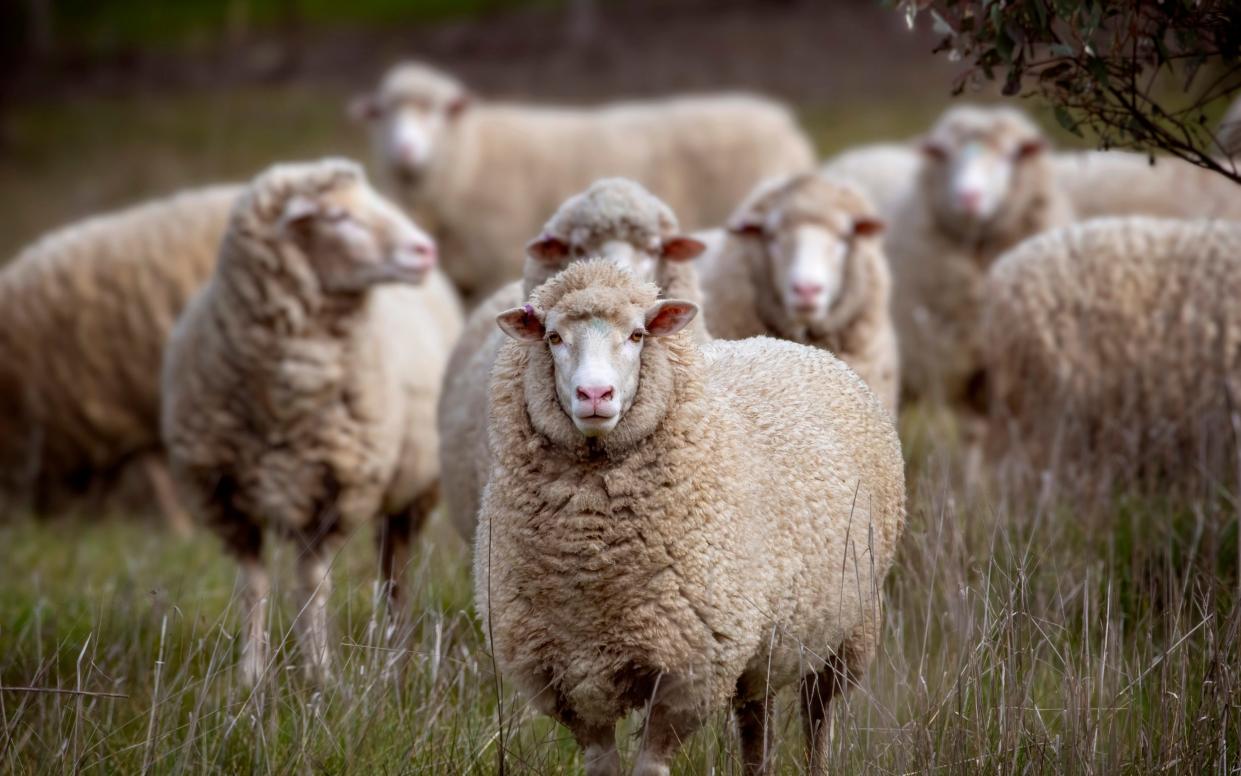Sheep in wolves’ clothing scare off predators

Putting a sheep in wolf’s clothing is an effective way to prevent them being eaten, Swiss researchers say.
The scientists have developed “pheromone collars”, which, when placed around the necks of cattle or sheep, trick wolves into believing that they have strayed into the territory of a rival pack causing them to slope off in search of unclaimed prey.
Studio Alpino and Tibio, the two companies involved, have tested the collars on more than 650 sheep and cows in and around 20 pastures in the Swiss Alps and say that the initial results are “very encouraging”.
“It’s a little box that you put on the animal’s collar. Inside there is a pocket of pheromones, that’s the innovation,” said Federico Tettamanti, a wildlife biologist and head of Studio Alpino, who co-invented the anti-wolf collar.
When wolves smell the pheromones, they think they are in another wolf’s territory. “Wolves have a highly developed sense of smell. With these pheromones, the wolf understands that there is a barrier that it must not cross because these are territory pheromones,” Mr Tettamanti told France Bleu radio in Savoie.
Wider tests to be carried out
So far, only one cow wearing a collar in the Vaud canton north-east of Geneva has been attacked, but the farmer had “only just put the anti-wolf collar on it”.
The two Swiss companies believe that the collar provides better protection for herds. “An animal wearing a pheromone-based collar is half as likely to be attacked by a wolf. I’m convinced it can work,” said Mr Tettamanti.
However, he said wider tests must be carried out before shepherds can sleep more easily. These will be conducted in the coming months in France in the southwestern Occitanie and southeastern Alpes-Maritimes regions.
Other anti-wolf collars have been in use for several years, but they are not pheromone-based. Most detect sudden movement when a flock or herd panics owing to the presence of wolves. This triggers an alarm that turns on powerful lights to scare the wolves away. Results have been mixed.
After centuries of absence, wolves were first spotted back in Switzerland in 2012. Today 32 wolf packs with a total of around 300 wolves roam the country. In 2020, there were only 11 packs with some 100 wolves.
The number of livestock killed rose from 446 in 2019 to 1,480 last year. This is a particular problem for Alpine farming with sheep and goats. However, the wolves also killed cattle, alpacas and a donkey.
Culling of wolf packs
This week, federal authorities authorised the culling of 12 wolf packs in five cantons. Ticino was permitted to shoot two-thirds of young wolves from a pack in Onsernone Valley.
The plan has appalled conservationists who say it is incompatible with the EU’s Habitats Directive, adopted in 1992, which prohibits the deliberate capture or killing of wolves in the wild.
However, in September, Brussels began a review into the predator’s status with Ursula von der Leyen, the president of the European Commission, warning: “The concentration of wolf packs in some European regions has become a real danger for livestock and potentially also for humans.”
She also urged local and national authorities to take advantage of exemptions to EU laws to allow farmers to take targeted measures to protect their crops and livelihoods, such as using “soft-catch” traps for wolves.

